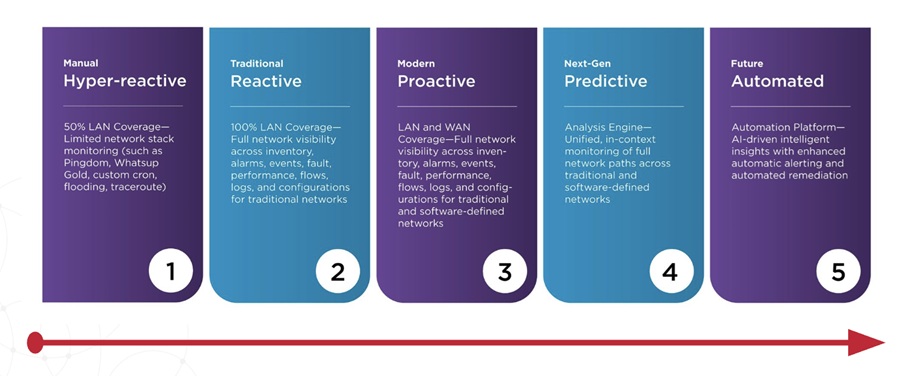Businesses globally face a "digital ceiling" when it comes to digital transformation, according to new research from Infosys Knowledge Institute (IKI), the thought leadership and research arm of Infosys. The study reveals that businesses must change their mindsets to achieve sophisticated levels of digital maturity.
Infosys Digital Radar 2020 assessed the digital transformation efforts of companies on a Digital Maturity Index and found year-over-year progress in basic areas, such as digital initiatives to improve a company's efficiency. However, most companies come up against a "digital ceiling" when trying to achieve the most advanced levels of maturity.
The report, which surveyed over 1,000 executives globally, ranked the most digitally advanced companies as "Visionaries", followed by "Explorers" and then "Watchers."
Companies know how to achieve moderate transformation success, with an 18% increase in companies progressing this year from the lowest tier of Watchers to the middle Explorer tier. However, Explorers struggled to move into the top Visionary cluster, with the top tier remaining the same, indicating a "digital ceiling" to transformation efforts.
The Visionary cluster remains unchanged despite companies reporting fewer barriers to digital transformation than last year. Human, rather than technological, barriers are now the most persistent, with the two of the top hurdles being the lack of talent or skills (34%) and a risk-averse corporate culture (35%).
How to Break Through the Digital Ceiling
The research demonstrates that top performers break through the digital ceiling because they think differently.
Firstly, successful companies focus strongly on people, using digital transformation to make improvements centred on customers and employees.
Most companies (68%) across the spectrum stated operational efficiency and increased productivity as a main transformation objective. But successful companies in the Visionary cluster are particularly motivated to make improvements for their employees. Nearly half of Visionaries describe "empowering employees" as a major business objective for transformation, compared with less than one third of Explorers and less than one fifth of Watchers.
Likewise, Visionaries have an increased focus on customer centred initiatives, being significantly more likely than other clusters to undertake transformation to improve customer experiences and engagement and in order to respond more quickly to customer needs.
Secondly, successful companies have a different mindset when it comes to transformation processes.
Traditional linear transformations result in long transformation timelines, meaning a company's improvements are out of date by the time the process is complete. Instead, top performers demonstrate a cyclical mindset, implementing recurring rapid feedback loops to accelerate transformation and keep updates relevant.
The Visionary cluster is far ahead of others in digital initiatives tied to quick cycles: 75% operate at scale in Agile and DevOps, compared with an overall average of 34% for the entire survey group.
Businesses Overestimate Tech Barriers and Underestimate Importance of Company Mndset
The importance of culture and a cyclical transformation mindset to breaking through the digital ceiling were underestimated by businesses last year.
In the 2019 Digital Radar report, companies were asked to predict the biggest barriers to their transformation progress for the following year. This year's Infosys Digital Radar 2020 compares these predictions to the actual challenges businesses faced in 2019.
Businesses reported dramatic declines in the impact that technological barriers have on their transformation progress, including:
■ Inability to experiment quickly (down 49%)
■ Insufficient budget (down 40%)
■ Cybersecurity challenges (down 40%)
However, businesses made much less progress against cultural barriers, including lack of change management capabilities (down 7%) and lack of talent (down 6%).


